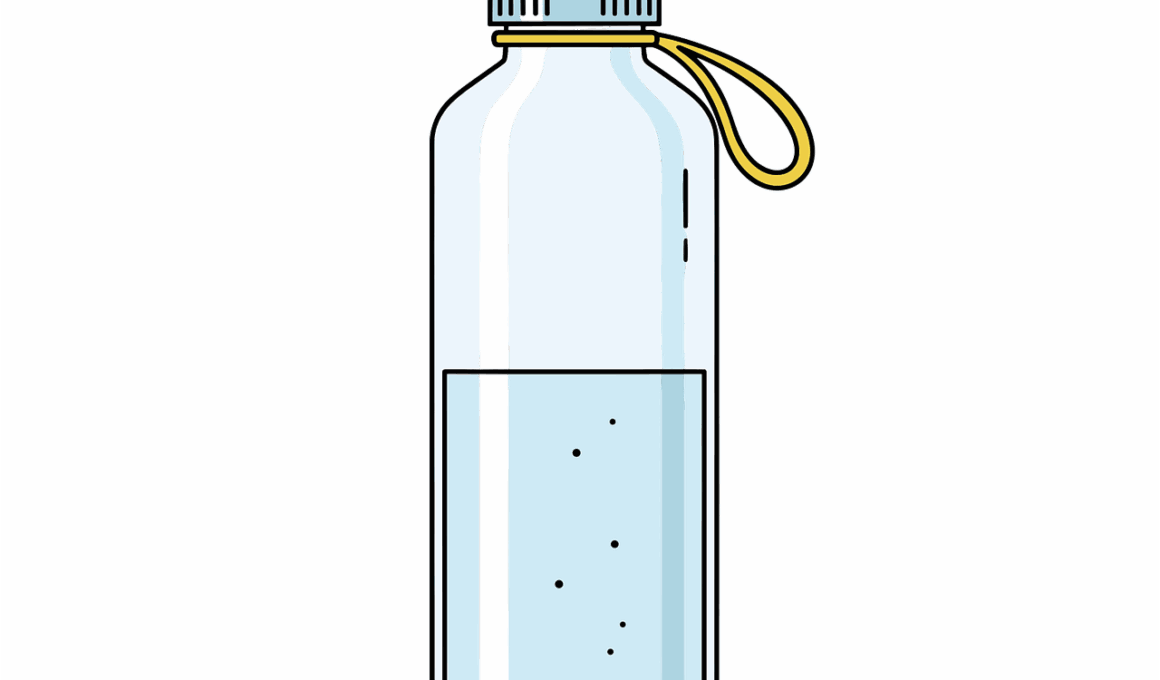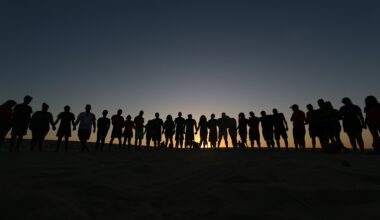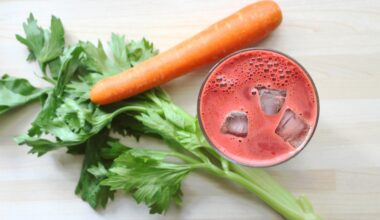Hydration and Fitness Tips for Senior Exercise Routines
Staying hydrated is crucial for everyone, especially seniors who are engaged in regular exercise routines. As we age, our bodies lose the ability to retain water. It becomes more difficult to sense thirst signals, making hydration even more important during physical activities. Water plays a vital role in body temperature regulation, joint lubrication, and nutrient transport. Seniors should aim to drink at least eight 8-ounce glasses of water daily; however, this varies based on individual needs and activity levels. It is essential to drink before, during, and after exercising, even if one does not feel thirsty. For those engaging in moderate to vigorous activities, consider drinks that replenish electrolytes like sodium and potassium. These are especially beneficial in warm weather or after long, taxing workouts. Incorporating hydrating foods into one’s diet is another effective strategy. Foods like cucumbers, watermelon, and oranges consist of high water content. These assist in meeting hydration needs while providing essential vitamins and minerals that are crucial for overall health. Hydration should always be a priority for seniors undertaking exercise routines if they want to maintain fitness safely and effectively.
Prior to starting any workout, seniors should prepare themselves adequately. A thorough warm-up routine is not only critical for injury prevention but also crucial for maximizing exercise benefits. This warming up helps increase blood flow to the muscles, making them more flexible and ready for the activities to come. Duration and the type of activity should be considered when planning a warm-up. Gentle stretches and light aerobic activities can help activate the cardiovascular system. Balancing exercises, such as standing on one leg, should also be included in the routine to enhance stability and coordination. Incorporate movements that involve both arms and legs to stimulate the whole body. A well-structured warm-up can range from 5 to 15 minutes, depending on the intensity of the planned workout. After completing workouts, it’s essential to cool down properly. A post-workout routine can help bring the heart rate back to its resting state. Gentle stretches can also relieve muscle tension. This practice should last about 5 minutes and involve slow, steady movements to promote relaxation. Proper warm-up and cooldown are effective strategies to enhance senior fitness safely.
Exercise Considerations for Seniors
Choosing the right type of exercises is crucial in promoting overall health and wellbeing in senior fitness routines. Ideally, seniors should engage in a mix of cardiovascular, strength training, flexibility, and balance exercises. Low-impact aerobic activities such as walking, swimming, or cycling are great options. These exercises promote cardiovascular health without placing excessive strain on joints. Strength training is equally important; using light weights, resistance bands, or bodyweight exercises can help improve muscle mass and bone density. This is particularly beneficial in combating age-related muscle loss, enhancing functional abilities for daily tasks. Furthermore, flexibility exercises, including yoga or tai chi, promote joint health and reduce stiffness. Establishing a regular schedule that fits personal preferences and lifestyle can enhance adherence to fitness routines. Try incorporating exercise into daily activities; consider short walks after meals or using the stairs instead of the elevator. The key is consistency; engaging in physical activity should be enjoyable and sustainable. Cultivating social connections foster motivation, too, as seniors can exercise together, sharing experiences and supporting each other along the journey toward better health.
Nutrition plays a vital role in supporting fitness and overall health, particularly for seniors involved in exercise routines. A balanced diet, rich in vital nutrients, is essential for providing the body with the energy it needs. This means incorporating whole grains, lean proteins, healthy fats, fruits, and vegetables into regular meals. Nutrient-dense foods aid in muscle recovery and help sustain energy throughout the day. Seniors, especially those involved in fitness routines, should focus on adequate protein intake to maintain muscle mass. Foods such as fish, poultry, legumes, and dairy products are excellent sources. Additionally, pay special attention to essential vitamins and minerals, such as Vitamin D, calcium, and potassium, which support bone health and muscle function. Consuming antioxidants found in berries and leafy greens can help combat oxidative stress brought on by physical activity. Staying mindful of portion sizes can be beneficial in maintaining a healthy weight while supporting fitness goals. Lastly, prepare nutritious snacks like yogurt with fruit or nuts, helping to keep energy levels stable while addressing hunger between meals.
Monitoring Hydration During Exercise
Maintaining proper hydration levels during exercise is essential, as dehydrated seniors may experience adverse effects more readily than younger athletes. To stay on top of hydration, seniors should make it a habit to drink water throughout the day, not just during exercise. If exercise is prolonged or intense, consider sports drinks with electrolytes. Keeping a water bottle nearby can encourage regular sipping before, during, and after any workout session. Seniors may also benefit from using timers or reminders to drink, especially during lengthy workouts or gym sessions. Observing color changes in urine can be a practical indicator of hydration; light yellow signifies proper hydration, while darker yellows may indicate a need for more fluids. Seniors should learn to identify signs of dehydration, including dry mouth, fatigue, dizziness, or muscle cramps. Nausea may also occur, especially during vigorous activities. If these symptoms arise, taking a break and rehydrating should be prioritized. Establishing hydration habits that include personal preferences can make drinking water more enjoyable, such as adding slices of fruit for flavor or using infused recipes.
Rest and recovery are crucial elements of a well-designed exercise plan for older adults. Many seniors may underestimate rest periods, believing that more exercise leads to increased fitness layers. However, the truth is that rest days are vital. Aging bodies may need longer recovery periods, making adjustments necessary based on capacity. Active recovery would entail lighter workouts, such as walking or stretching, to promote circulation while allowing muscles to recover. Understanding one’s own body is essential; fatigue, muscle soreness, and overall performance levels should be monitored closely and scheduled rest days should be observed. Overtraining can lead to exhaustion, decreased performance, and even injury. Quality sleep also plays a crucial role in recovery; seniors should prioritize obtaining restful sleep each night. This helps muscles rebuild and allows the body’s energy supplies to be restored. Regular rest and recovery phases can enhance adherence to exercise programs and reduce burnout. Anyone engaging in regular fitness routines should listen to their bodies and remain flexible with workout schedules, ensuring they are balancing productivity with self-care for optimal overall health.
Conclusion: Staying Active and Hydrated Together
In summary, successfully implementing hydration and fitness tips for seniors can lead to improved health outcomes. It is crucial to prioritize hydration, warm-ups, and nutrition as vital components of fitness routines. Seniors should engage in a diverse range of activities to support balance, strength, and endurance while remaining mindful of their hydration needs during exercise. Cultivating a vibrant social fitness environment can motivate seniors as they embark on these activities together, sharing tips and providing mutual encouragement. Incorporating balanced diets, understanding hydration signals, and embracing recovery practices can greatly enhance results and well-being. Education about exercise benefits and safety is paramount; seeking professional advice can provide personalized recommendations for safe activities. Participating in group classes or community programs can strengthen social connections while promoting consistency in fitness endeavors. As seniors become more active, hydration, safety, and informative guidance should remain at the forefront of their health priorities. The ultimate goal is a healthy, active lifestyle allowing seniors to enjoy life fully while retaining independence. With careful planning and execution, achieving a balance between exercise and hydration can pave the way for a fulfilling and vibrant life.



